 Covering COVID-19 is a daily Poynter briefing of story ideas about the coronavirus and other timely topics for journalists, written by senior faculty Al Tompkins. Sign up here to have it delivered to your inbox every weekday morning.
Covering COVID-19 is a daily Poynter briefing of story ideas about the coronavirus and other timely topics for journalists, written by senior faculty Al Tompkins. Sign up here to have it delivered to your inbox every weekday morning.
Virginia’s largest school system recently noticed an 83% increase in F grades. When the first quarter of the virtual school year ended, Fairfax County found nearly 10,000 students had scored an F in at least two classes.
The Daily Mail says that story is playing out around the country. Here are some examples:
Students with disabilities and those whose first language is not English are struggling the most, with increases of 111% and 106% respectively.
Among middle schoolers alone, F grades have increased a staggering 300%.
Hispanic middle school students, according to the report, saw a 400% increase in Fs, English learners saw a 383% increase.
Economically disadvantaged children, meanwhile, saw a 375% increase in F’s.
In the Independent School District in Houston, more than 40 percent of students are earning failing grades in at least two of their classes
Similarly, in Minnesota, 40 percent of high schoolers in St. Paul Public Schools have received failing marks.
Bob Farrace, spokesman for the National Association of Secondary School Principals, told the Washington Post that he’s heard from educators across the country who say they’re working themselves to the bone to keep students learning and achieving. “But with so many challenges at once,” he said, “it’s like they’re holding back a tidal wave with a broom.”
The San Diego Union-Tribune found:
The number of D and F grades in Sweetwater (CA) schools has ballooned, representing 28 percent of its high school grades and 32 percent of its middle school grades on recent progress reports.
By comparison, last year D’s and F’s were 20 percent of high school grades and 19 percent of middle school grades, according to district data.
The national consulting firm McKinsey & Co. estimated that students who do not receive fulltime, in-person instruction until 2021 will lose an average of seven months of learning this school year. Hispanic students may fall behind further, by nine months, and Black students by 10 months. Low-income students may fall behind by more than a year, the firm said.
Warner Bros. will release movies in theaters and streaming at the same time in 2021
This has to be awful news for movie theatres. Warner Bros. just announced it will release 2021 films simultaneously in theaters and streaming services. “Suicide Squad 2,” “Godzilla vs. Kong,” “Dune” and “The Matrix 4” all will arrive via HBO Max at the same time they open in theatres. In fact, the first of these same-day releases begins Christmas Day with “Wonder Woman 1984.” It makes you wonder if they will ever be able to go back to the old way of releasing films — first in theatres then three months later on streaming services.
See your state’s preliminary vaccine distribution plan
These preliminary plans will give you some guideposts for how your state is thinking about how vaccines will be distributed. Just keep in mind that these plans are preliminary and that states will submit their final plans to the Centers for Disease Control and Prevention today.
Some questions for you to be asking as we await the release of the final state plans:
- Will your state develop specific messaging to reach racial and ethnic minorities?
- Does your state have a functional vaccine registry? How does it work? Who has access to the data? As of mid-November, only half of the states said they had reasonably comprehensive vaccine registries. You can contact your state’s vaccine registry here. (Did you even know there WAS such a thing?)
- Will your state comply with the CDC’s guidance of vaccinating health care workers and nursing home residents first, or will your state have other priorities? (Most likely, states will stick to the CDC plan at least in the first few stages of vaccinations.)
- Will your state be using the Vaccine Adverse Events Reporting System, or VAERS, to report adverse reactions to the vaccine? How easy will it be for patients to report reactions?
Maybe the public is warming up to the COVID-19 vaccine
Tracking polls have generally reflected political rhetoric around whether people plan to take a coronavirus vaccine. But now that we are on the verge of having an approved vaccine, the public seems to be warming up to the notion of taking the shot. Notice how the Ipsos/Axios data blow picks up just before the election.
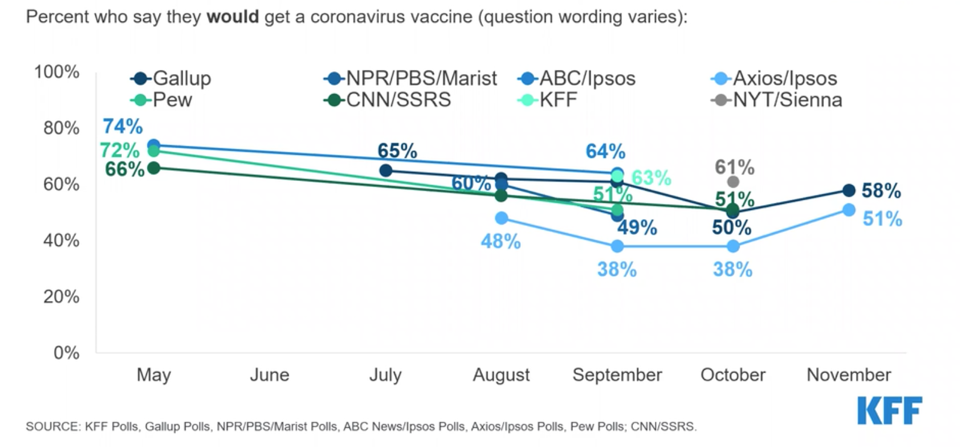
(Kaiser Family Foundation)
By the time the general public can get vaccinated (after nursing homes and health care workers) we will have about two months of data about reactions to the shots. So assuming there are no major screwups, these numbers will likely grow.
But the newest polling still shows big differences in attitudes toward the vaccines across races and political leanings. Half of Black Americans and half of people who identify as Republicans say they do not plan to take the vaccine.
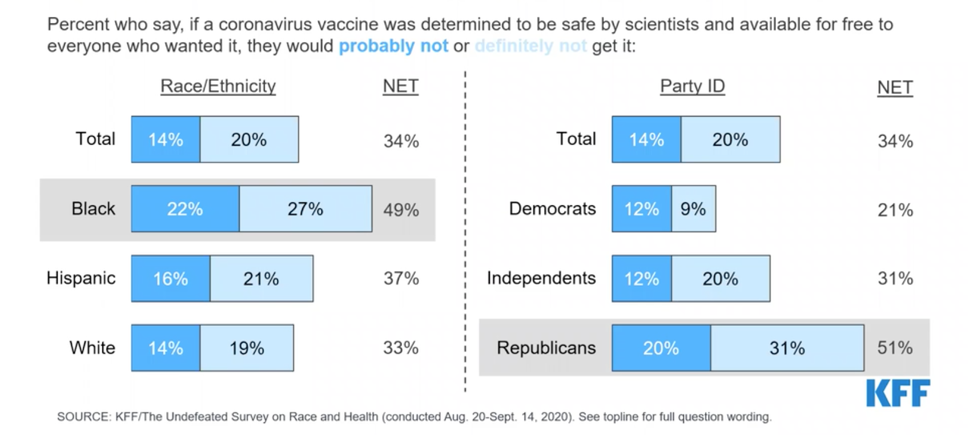
(Kaiser Family Foundation)
And what worries people who say they do not plan to be vaccinated? Among Black Americans, is it largely a matter of trust. For white Americans, the most common reason people give for rejecting vaccines is that they do not think they need it.
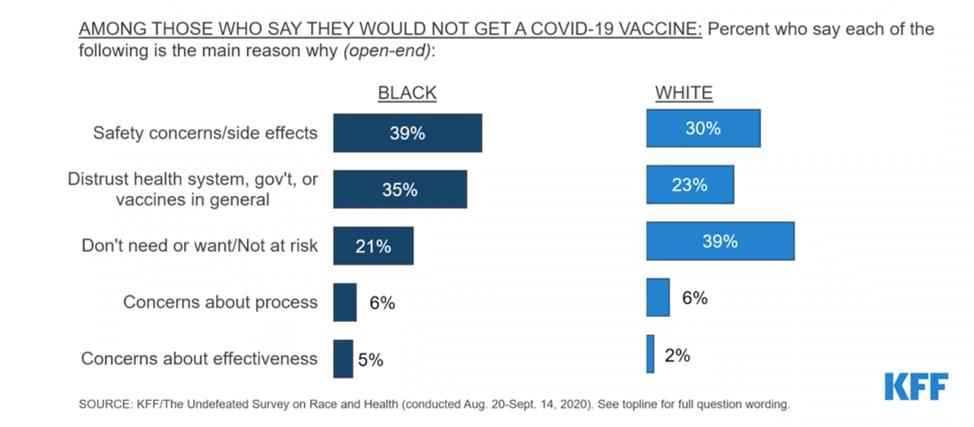
(Kaiser Family Foundation)
Another big factor will be whether employers require workers to get vaccinated, whether you will have to prove you have been vaccinated to board a plane or train and whether schools (including colleges) will require vaccinations.
And keep in mind, hypothetical plans and real-life actions can be different.
The COVID-19 connection with increased highway fatalities
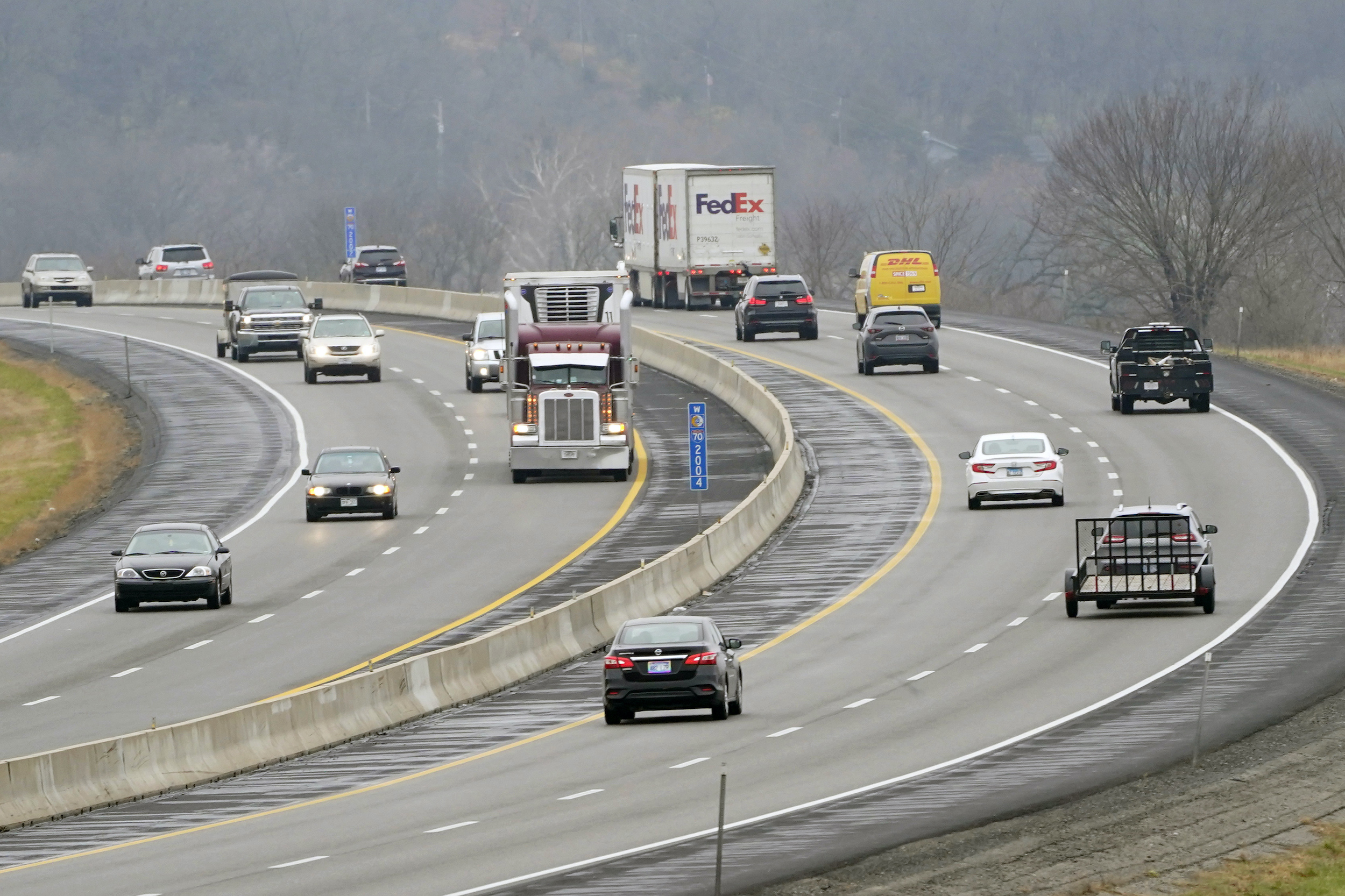
Vehicles travel in advance of Thanksgiving along I-70 near Lawrence, Kan., Wednesday, Nov. 25, 2020. (AP Photo/Orlin Wagner)
You would think that when we drive less, because the pandemic keeps many of us at home, that we would see far fewer traffic fatalities. But look deeper at the newest data and you will find that drivers are going faster, are more often not wearing seatbelts and seem to be drinking and driving more.
Recent data released by the National Highway Traffic Safety Administration indicates that in the second quarter of this year, American highways were more dangerous, per miles traveled, than they have been in previous years.
Let’s be clear, the total number of traffic fatalities so far in 2020 is down compared to 2019. But when you look at the deaths for vehicle miles traveled, you will find that 2020 is a more dangerous time to drive. The feds think that more sparsely traveled highways have encouraged drivers to hit the gas and go faster. The report says:
State and national data suggest that there were several factors contributing to the increase in the fatality rate. First, there is evidence of an increase in ejection rates among people who were in crashes, suggesting a decrease in the seat belt use rate of vehicle occupants. This increase was heavily tilted toward males, people 18 to 34 years old, and people in rural areas.
Second, according to State data and other reports, speeding was more prevalent on the roads. The reduction in traffic volume coupled with community efforts to reduce law enforcement personnel exposure by implementing changes in law enforcement activity provided drivers a greater opportunity to speed.
Additionally, there is evidence of increased alcohol use and higher drug use (including marijuana and opioids), and survey research indicating that many individuals have started or increased drug and alcohol use to cope with pandemic-related stress. Newly released research from five trauma centers revealed a higher prevalence of alcohol, cannabinoids, and opioids in crash victims during the public health emergency compared to before.
Vaccine logistics will be cyber-targets
We are just learning about a phishing attack that seems to be connected to the logistics of how the COVID-19 vaccine will be distributed. It is unclear who is behind the attack and why.
The Pfizer vaccine may be approved for people as young as 16 years old
So far, the coronavirus vaccines have not been tested on children, but when the U.S. Food and Drug Administration considers Pfizer’s application for emergency approval next week, it may also consider allowing the vaccine to go to teenagers as young as 16 years old. Keep in mind that even if that happens, the young folks will not be eligible for vaccines until other priority groups are vaccinated.
The first round of tests did include a small number of adolescents. Children represent about 10% of COVID-19 cases documented in the U.S. but young people may spread the virus more readily than adults. More young people are currently in drug trials now.
‘Guilt gifting’ in a pandemic
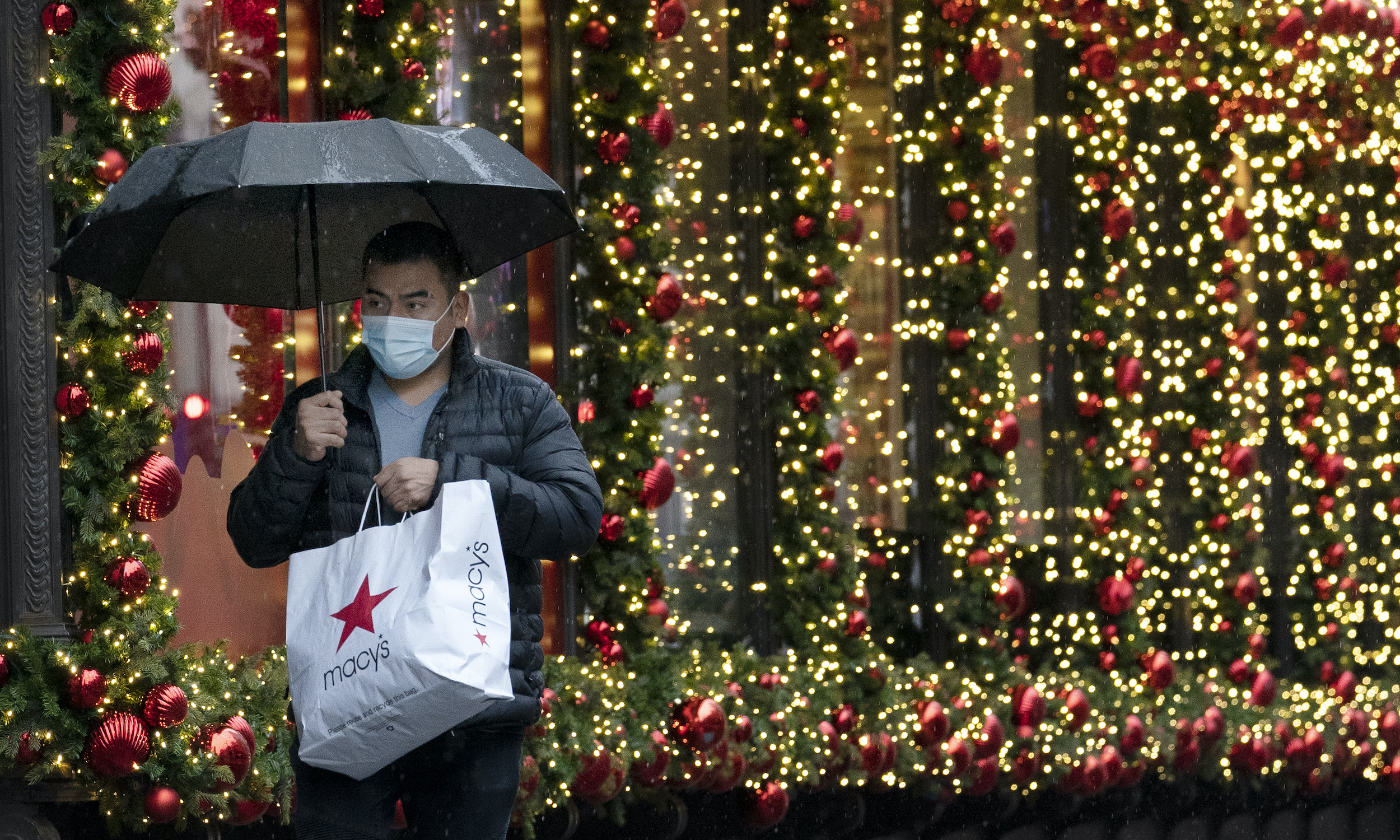
A shopper walks by a holiday window display, Monday, Nov. 30, 2020, in New York. (AP Photo/Mark Lennihan)
The Detroit News reports, “About 40% of consumers say they’re going to buy more gifts in 2020 to bring joy during challenging times, according to research by the NPD Group.”
Business Insider boiled it down this way:
In short: The inability to see relatives is pushing people to splurge more than usual on gifts, and that’s particularly true for gifts that can be easily gifted from afar.
Meal plan subscriptions are up — beating out streaming service subscriptions for subscription-based gifts. Gift card interest has increased dramatically, with 53% of survey respondents affirming plans to give a gift card this year.
Product categories that will see greater interest this holiday will include “items that are useful to the consumer’s new way of life,” according to Cohen. That includes everything from robot vacuums to computer monitors.
Are you hoarding credit card loyalty points?
I don’t know about you, but I am sitting on a zillion hotel and airline loyalty program points since I have not traveled during the pandemic. Credit card companies say people appear to be hoarding points, hoping to use them in 2021. But remember, when airlines or hotels get tight on money, there is nothing to prevent them from charging more for a flight or a room. And when people start trying to use the points, the companies may tighten availability and blackout dates.
The way we live now: the McRib theory
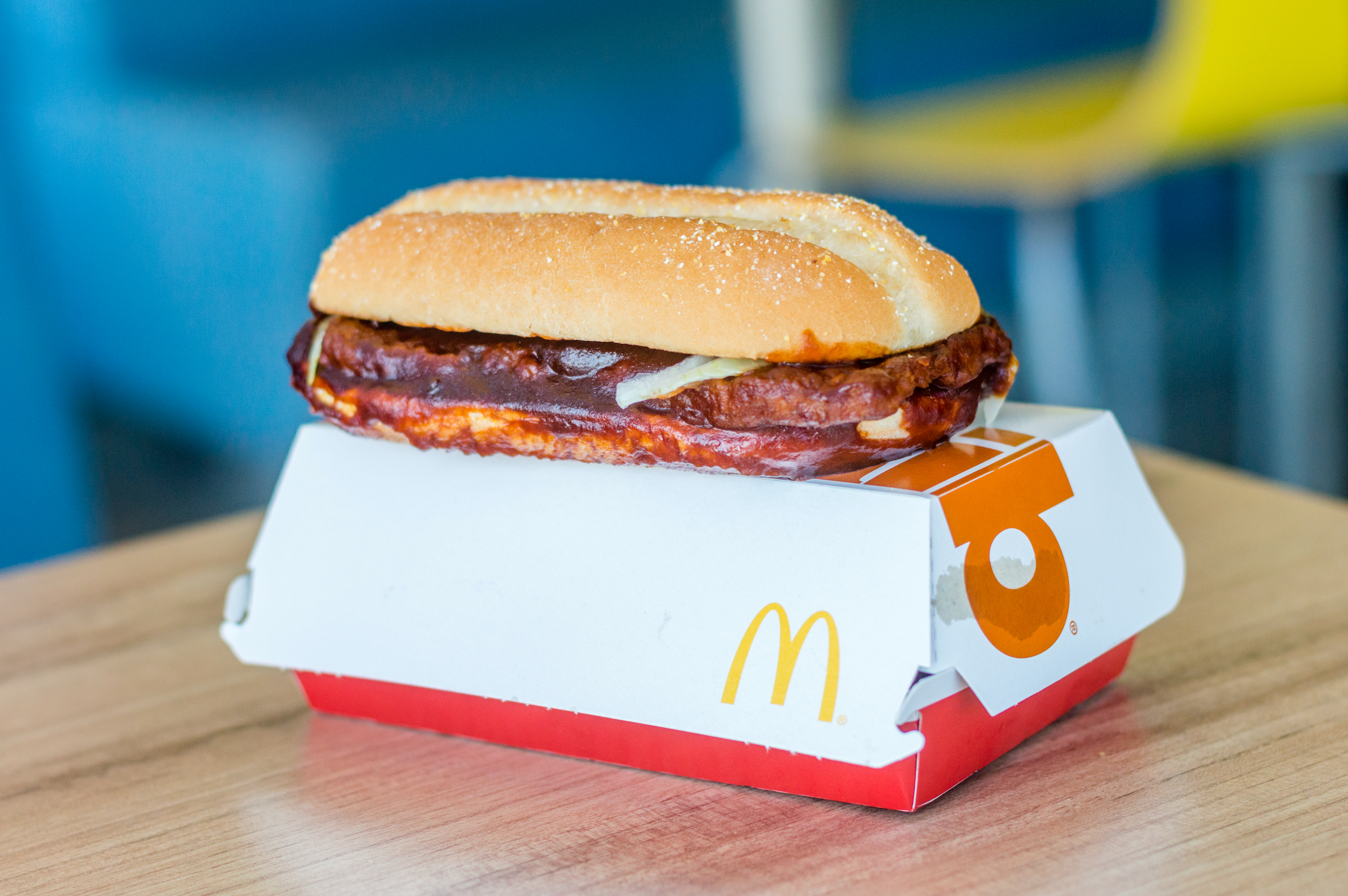
McDonald’s McRib sanwich (Shutterstock)
Among the mysteries of 2020 is why the McDonald’s McRib is making a December comeback. For three decades, it has drifted into and out of our lives only to be welcomed back, knowing it will leave us again.
Now there is a viable theory on why the McRib makes a comeback. Axios gives us a chart of pork prices and notes that when pork prices drop, McRib (which is pork) comes back.
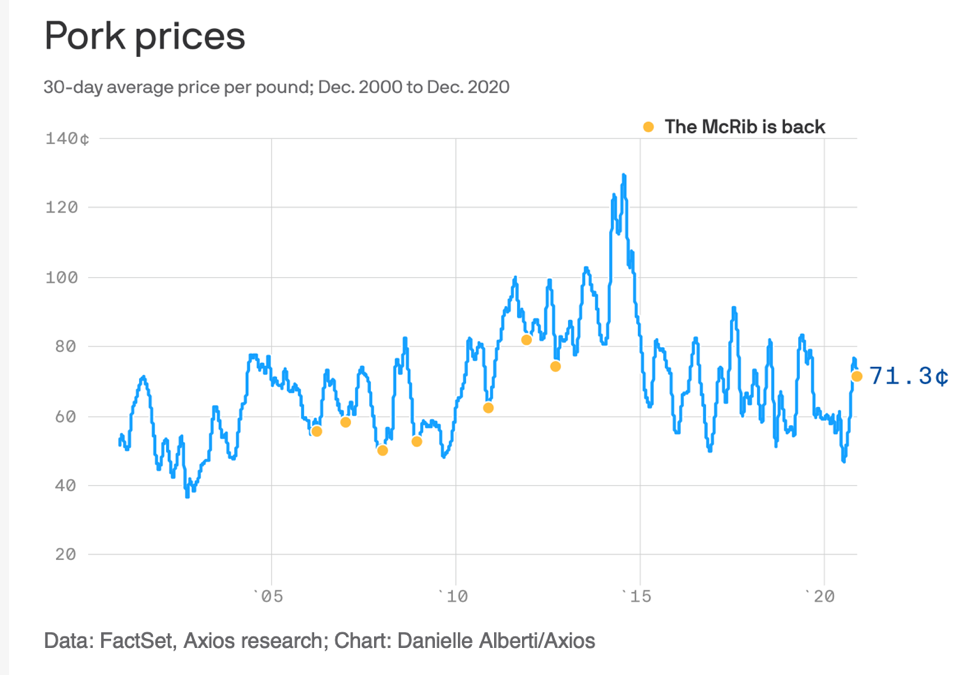
(Axios)
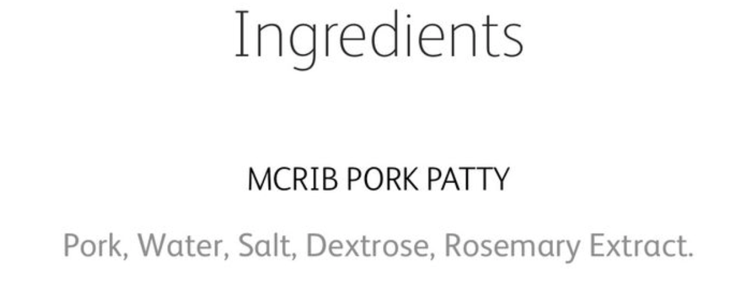
(McDonald’s)
But wait, pork prices are rising, so why the comeback now? The answer may be that when prices tanked, the producers bought what they would need to give you a delicious December.
There are counter-theories to consider:
- Theory 1: McRib would not be popular in the summer because people already are grilling their own barbecue.
- Theory 2: McRib is a loss leader that gets people excited to come in and buy other stuff, and restaurants need people to come in and buy stuff right now.
- Theory 3: McRib is a cult product and gets a lot of free publicity, so McDonald’s rolls it out once in a while to make the people happy.
By the way, McDonald’s has not sold a single salad since April. Business Insider explains it is part of an attempt to cut the menu and speed up service, for now.
We’ll be back Monday with a new edition of Covering COVID-19. Sign up here to get it delivered right to your inbox.







